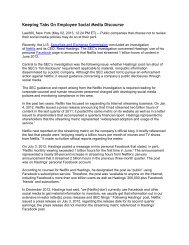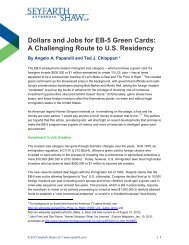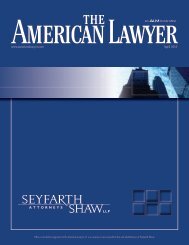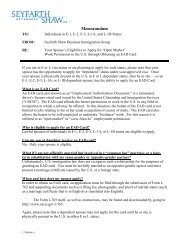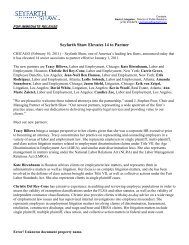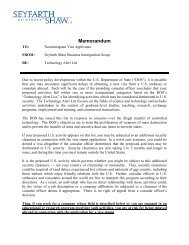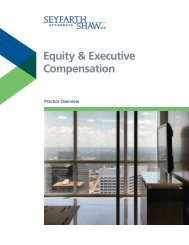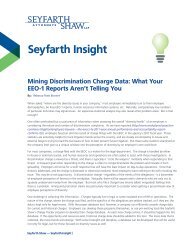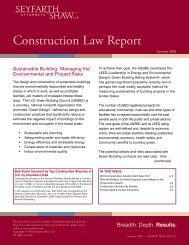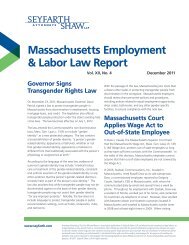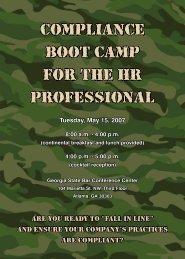Litigating California Wage & Hour and Labor Code Class Actions
Litigating California Wage & Hour and Labor Code Class Actions
Litigating California Wage & Hour and Labor Code Class Actions
Create successful ePaper yourself
Turn your PDF publications into a flip-book with our unique Google optimized e-Paper software.
precertification discovery. 467 The court distinguished CashCall, noting that in that case, “the<br />
only conceivable class members were debtors who were unaware of the secret monitoring,”<br />
<strong>and</strong> therefore unaware that they had potential claims. 468 “However, in contrast, Starbucks’<br />
job applicants who had marijuana convictions know about their own previous convictions<br />
<strong>and</strong> about the fact that they had applied for a job at Starbucks,” <strong>and</strong> therefore had a fair<br />
opportunity to file suit if they so desired. 469 Thus, the court held that the Parris balancing<br />
test required the requested precertification discovery to be denied because the potential<br />
abuse of the class action procedure in this instance outweighed the rights of the class<br />
members. 470<br />
To the extent that any rule derives from all of these cases, it appears to be that the trial<br />
court has broad discretion to deny discovery for the plaintiff to locate a new class<br />
representative when the plaintiff is inadequate, but more narrow discretion in the absence<br />
of a showing that the plaintiff never was a proper putative class member or never<br />
experienced an injury in fact. Trial courts appear to lack any discretion to deny discovery<br />
where the plaintiff is rendered inadequate by conduct of the defendant or as a result of<br />
some other characteristic independent of the merits of the plaintiff’s claims.<br />
XVI. <strong>Class</strong> Action Settlement<br />
A. Generally<br />
The vast majority of class actions result in a settlement. Unlike an individual settlement of<br />
employment law claims, a court must approve a class settlement to ensure that it is fair <strong>and</strong><br />
reasonable, is not the product of collusion, <strong>and</strong> does not subordinate the interests of the<br />
broader class to those of the named plaintiffs. 471<br />
Typically, the plaintiffs <strong>and</strong> the defendant enter into a stipulation of settlement, which a<br />
court analyzes to determine if the agreement looks reasonable on its face. If so, the court<br />
will grant preliminary approval (sometimes called “conditional certification”) <strong>and</strong> then notice<br />
of the settlement will be sent to the class. Most commonly, class members will be given a<br />
choice of (1) returning a claim form to receive money under the agreement; (2) returning a<br />
request for exclusion (“opt out”) form that excludes them from the settlement <strong>and</strong> preserves<br />
their individual right to sue; or (3) doing nothing, in which case the class members receive<br />
467<br />
468<br />
469<br />
470<br />
471<br />
Id. at 725.<br />
Id. at 726.<br />
Id.<br />
Id. at 726 (also noting that “the excessive penalties sought by class counsel bear little relationship to any true public<br />
interest for what, at most, appears to be a technical violation of <strong>Labor</strong> <strong>Code</strong> 432.8 by Starbucks”).<br />
See generally Dunk v. Ford Motor Co., 48 Cal. App. 4th 1794, 1800-01 (1996).<br />
Seyfarth Shaw LLP | www.seyfarth.com <strong>Litigating</strong> <strong>California</strong> <strong>Wage</strong> & <strong>Hour</strong> <strong>Class</strong> <strong>Actions</strong> (12th Edition) 102



